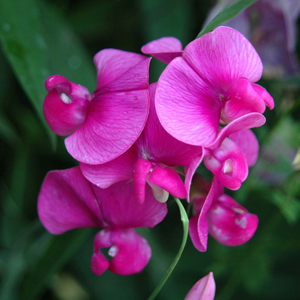How to create a scent-sational garden
Indulge in living fragrance fashioned by the most famous perfumer of all - Mother Nature.
One of the things we love most about spring in the garden is the sensory wonderland it creates. Spring brings a cavalcade of colour, lush foliage texture, an influx of wildlife and a bumper edible harvest - but most of all, it brings scent. And if you plan carefully, you can enjoy a scented garden all year long. Intrigued? Read on!

Lavender is a favourite plant for scented gardens.
Subtle scents versus obvious aromas
Nature expresses itself in a myriad of awe-inspiring ways, and fragrant plants are no exception. From the rich, spicy scent of citrus to the heady, sweet aroma of jasmine, you’ll be inspired by the impressive array of scented flowers and shrubs you’ll find - and the different intensity of scent you might experience from plant to plant.
Fragrant foliage usually needs to be brushed against or crushed to release the aromatic oils into the air, so if you want to appreciate the scent of these plants in your garden, they are best planted along paths and driveways or underfoot. Flowers with a strong fragrance can be overpowering, so may be better planted further away.

Sweet peas are beautifully fragrant, but you have to get up close to smell them.
Common jasmine, murraya, cestrum and brunsfelsia, for example, have strong fragrances with a tendency to waft so that you'll often smell them before you see them. Daphne, bouvardia, violet and sweet pea are fragrant favourites that are best appreciated up close. Different species of rose are renowned for varying in aromatic intensity, with some releasing a light fragrance and others better known for their deep, lingering perfume.
Sometimes a subtle fragrance is more noticeable in a sheltered spot where the wind cannot disperse it. Strong fragrances that smell fabulous to one person may be unpleasant for another. Some plants only release their scent in the evening, while others are intensified by humidity and heat, so for year-round enjoyment, consider a range of fragrant annuals, perennials and bulbs to suit each season and situation.

One of the most iconic garden scents, you'll smell jasmine before you catch sight of it.
Location, location, location
To fully appreciate the benefits of fragrant flowers, one really needs to live with – not just look at – these beautiful blooms. Integrating them into your lifestyle means you’ll be able to enjoy their visual and olfactory beauty throughout the day, all year round. Location is, therefore, as essential to a fragrant garden plan as the type of plants you pick.
Consider positioning a few flowers or shrubs near popular meeting places, like the barbeque or patio, so people have the opportunity to soak in the aroma. Garden chairs, windowsills and stairs are also great spots. Covering a pergola or walled courtyard with wisteria will result in a spectacular display of spring aroma, while lining either side of the driveway with lavender bushes or pelargonium means you’ll be able to enjoy the heavenly scent as you brush by their foliage each day. Gates, gateways and entries are often forgotten areas that greatly benefit from a perfume pick-me-up. And arranging a hanging basket filled with sweet-scented flowers near the washing machine, kitchen sink and clothesline will surely make those day-to-day chores far more enjoyable.

Position magnolias and other fragrant trees so their blooms reach a window or balcony.
The long and short of it
Fragrant plants come in all shapes and sizes, so finding the right home for each one does require a little forethought. A simple way to introduce perfumed plants into your daily life is to position them in hanging baskets at nose level so you can enjoy the aroma every time you walk by. Vines interlaced around windows and over pergolas are also effective, while peppering aromatic herbs between paving means a beautiful scent will be released each time you step on them. Tall trees with fragrant flowers that are normally out of reach (like frangipani or magnolia trees) should be planted so their branches reach an upper balcony or window. When in bloom, even the slightest breeze will carry the scent indoors.
Variety is the spice of life
Avoid having too many fragrant plants blooming simultaneously – and overdosing the garden with competing aromas – by selecting a broad spectrum of seasonal plants to spread around the garden. This way you can enjoy a beautifully scented space all year round!

